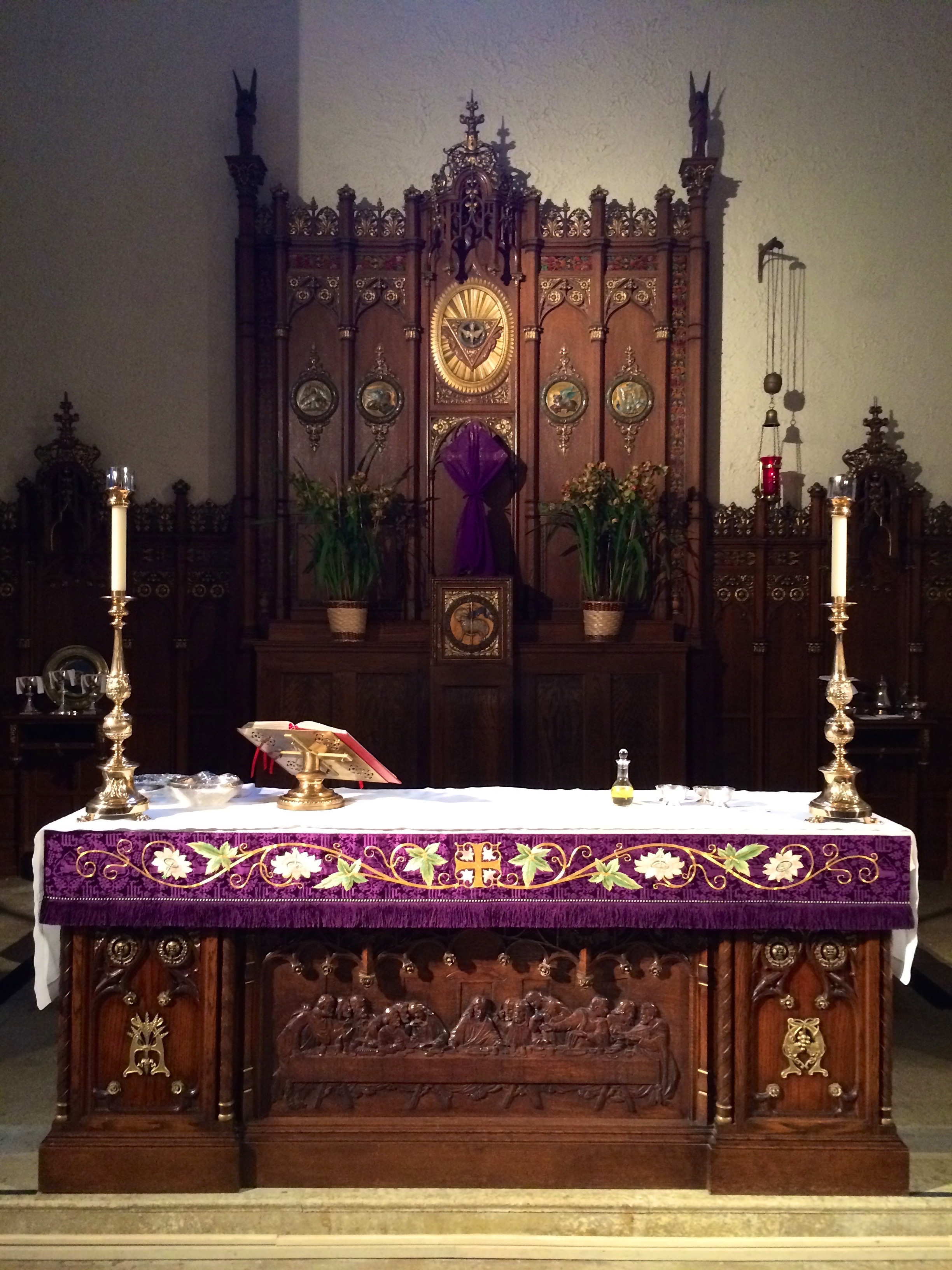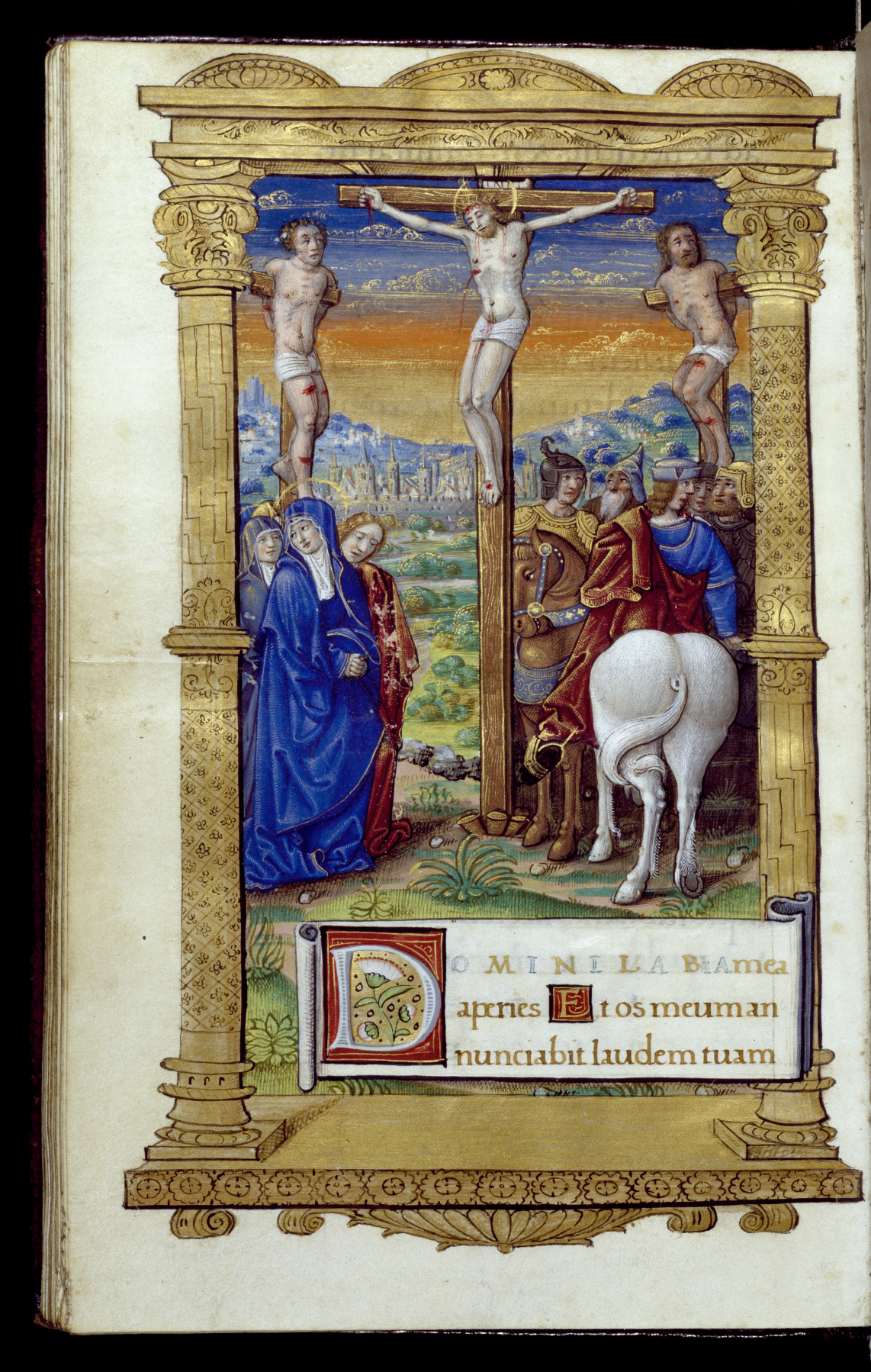|
Pre-Lenten
Pre-Lent begins the Christian time of preparation for Easter, in the three weeks before Lent. This period launches a campaign of catechesis, reflected in the liturgical readings. Its best-known feature is its concluding three-day festival, Carnival or Shrovetide. Western Churches The pre-Lenten period begins with Septuagesima, first documented in Gregory the Great. It traditionally opens a period of religious instruction leading to the reception of catechumens at Easter, supported by events such as mystery plays. The traditional lectionary for the canonical hours summarizes salvation history between Septuagesima and Easter, beginning with a reading of the Book of Genesis. The last three days of pre-Lent are known as Carnival, Shrovetide, or Fastelavn, a festival ending with Shrove Tuesday or Mardi Gras. The liturgy of the period is characterized by violet vestments (except on feasts) and a more penitential mood. From Septuagesima, Alleluia is not traditionally sung in worship. A ... [...More Info...] [...Related Items...] OR: [Wikipedia] [Google] [Baidu] |
Carnival
Carnival (known as Shrovetide in certain localities) is a festive season that occurs at the close of the Christian pre-Lenten period, consisting of Quinquagesima or Shrove Sunday, Shrove Monday, and Shrove Tuesday or Mardi Gras. Carnival typically involves public party, celebrations, including events such as parades, public street party, street parties and other entertainments, combining some elements of a circus. Elaborate costumes and masks allow people to set aside their everyday individuality and experience a heightened sense of social unity.Bakhtin, Mikhail. 1984. ''Rabelais and his world''. Translated by H. Iswolsky. Bloomington: Indiana University Press. Original edition, ''Tvorchestvo Fransua Rable i narodnaia kul'tura srednevekov'ia i Renessansa'', 1965. Participants often indulge in excessive consumption of alcohol, meat, and other foods that will be forgone during upcoming Lent. Traditionally, butter, milk, and other animal products were not consumed "excessively", r ... [...More Info...] [...Related Items...] OR: [Wikipedia] [Google] [Baidu] |
Lent
Lent (, 'Fortieth') is the solemn Christianity, Christian religious moveable feast#Lent, observance in the liturgical year in preparation for Easter. It echoes the 40 days Jesus spent fasting in the desert and enduring Temptation of Christ, temptation by Satan, according to the Gospels of Gospel of Matthew, Matthew, Gospel of Mark, Mark and Gospel of Luke, Luke, before beginning his Ministry of Jesus, public ministry. Lent is usually observed in the Catholic Church, Catholic, Lutheranism, Lutheran, Moravian Church, Moravian, Anglican Communion, Anglican, United and uniting churches, United Protestant and Eastern Orthodoxy, Orthodox Christian traditions, among others. A number of Anabaptism, Anabaptist, Baptists, Baptist, Methodism, Methodist, Calvinism, Reformed (including certain Continental Reformed Protestantism, Continental Reformed, Presbyterianism, Presbyterian and Congregational church, Congregationalist churches), and Nondenominational Christianity, nondenominational Ch ... [...More Info...] [...Related Items...] OR: [Wikipedia] [Google] [Baidu] |
Pharisee And The Publican
The parable of the Pharisee and the Publican (or the ''Pharisee and the Tax Collector'') is a parable of Jesus that appears in the Gospel of Luke. In Luke 18:9–14, a self-righteous Pharisee, obsessed by his own virtue, is contrasted with a tax collector who humbly asks God for mercy. This parable primarily shows Jesus teaching that justification can be given by the mercy of God irrespective of the receiver's prior life and that conversely self-righteousness can prohibit being justified. Further coming as it does in a section of teaching on prayer it demonstrates the need to pray humbly. It immediately follows the Parable of the Unjust Judge, which is also about prayer. In the Eastern Orthodox Church, the ''Sunday of the Publican and the Pharisee'' commemorates the parable and begins the three-week pre-Lenten Season. Narrative To some who thought they were self righteous and regarded others with contempt, Jesus told this parable: “Two men went to the temple to pray: ... [...More Info...] [...Related Items...] OR: [Wikipedia] [Google] [Baidu] |
Great Lent
Great Lent, or the Great Fast (Greek language, Greek: Μεγάλη Τεσσαρακοστή, ''Megali Tessarakosti'' or Μεγάλη Νηστεία, ''Megali Nisteia'', meaning "Great 40 Days", and "Great Fast", respectively), is the most important fasting season of the church year within many denominations of Eastern Christianity. It is intended to prepare Christians for the greatest feast of the church year, Easter, Pascha (Easter). Great Lent shares its origins with the Lent, Lent of Western Christianity and has many similarities with it. There are some differences in the timing of Lent, besides calculating the date of Easter and how it is practiced, both liturgically in the public worship of the church and individually. One difference between Eastern Christianity and Western Christianity is the calculation of the date of Easter (see Computus). Most years, the Eastern Pascha falls after the Western Easter, and it may be as much as five weeks later; occasionally, the two dat ... [...More Info...] [...Related Items...] OR: [Wikipedia] [Google] [Baidu] |
Alleluia
''Hallelujah'' (; , Modern Hebrew, Modern ) is an interjection from the Hebrew language, used as an expression of gratitude to God. The term is used 24 times in the Hebrew Bible, Tanakh (in the book of Psalms), twice in deuterocanonical books, and four times in the Christian Book of Revelation. The phrase is used in Judaism as part of the Hallel prayers, and in Christianity, Christian prayer, where since the earliest timesScott Nash, "Hallelujah" in ''Mercer Dictionary of the Bible'' (Mercer University Press 1990 ), p. 355 it is used in various ways in liturgy, liturgies, especially those of the Catholic Church, the Lutheran Churches and the Eastern Orthodox Church, the three of which use the Latin form '' ... [...More Info...] [...Related Items...] OR: [Wikipedia] [Google] [Baidu] |
Mystery Plays
Mystery plays and miracle plays (they are distinguished as two different forms although the terms are often used interchangeably) are among the earliest formally developed plays in medieval Europe. Medieval mystery plays focused on the representation of Bible stories in churches as tableaux with accompanying antiphonal song. They told of subjects such as the Creation, Adam and Eve, the murder of Abel, and the Last Judgment. Often they were performed together in cycles which could last for days. The name derives from '' mystery'' used in its sense of ''miracle,'' but an occasionally quoted derivation is from ''ministerium'', meaning ''craft'', and so the 'mysteries' or plays performed by the craft guilds. Origins As early as the fifth century, living tableaux were introduced into sacred services. The plays originated as simple ''tropes'', verbal embellishments of liturgical texts, and slowly became more elaborate. At an early period chants from the service of the day were a ... [...More Info...] [...Related Items...] OR: [Wikipedia] [Google] [Baidu] |
Lectionary
A lectionary () is a book or listing that contains a collection of scripture readings appointed for Christianity, Christian or Judaism, Jewish worship on a given day or occasion. There are sub-types such as a "gospel lectionary" or evangeliary, and an :wikt:epistolary, epistolary with the readings from the New Testament Epistles. History By the Medieval era the Jewish community had a Weekly Torah portion, standardized schedule of scripture readings from both the Torah and the prophets to be read in the synagogue. A sequential selection was read from the Torah, followed by the "haftarah" – a selection from the prophetic books or historical narratives (e.g. "Judges", "Kings", etc.) closely linked to the selection from the Torah. Jesus may have read a providentially "random" reading when he read from Isaiah 61:1–Isaiah 61:2, 2, as recorded in Luke 4:16–21, when he inaugurated his public ministry. The early Christians adopted the Jewish custom of reading extracts from the Old T ... [...More Info...] [...Related Items...] OR: [Wikipedia] [Google] [Baidu] |
Canonical Hours
In the practice of Christianity, canonical hours mark the divisions of the day in terms of Fixed prayer times#Christianity, fixed times of prayer at regular intervals. A book of hours, chiefly a breviary, normally contains a version of, or selection from, such prayers. In the Roman Rite of the Catholic Church, canonical hours are also called officium, since it refers to the official prayer of the Church, which is known variously as the ("divine service" or "divine duty"), and the ("work of God"). The current official version of the hours in the Roman Rite is called the Liturgy of the Hours () or ''divine office''. In Lutheranism and Anglicanism, they are often known as the daily office or divine office, to distinguish them from the other "offices" of the Church (e.g. the administration of the sacraments). In the Eastern Orthodox Church, Eastern Orthodox and Byzantine Rite, Byzantine Catholic Churches, the canonical hours may be referred to as the Divine Service (Eastern Or ... [...More Info...] [...Related Items...] OR: [Wikipedia] [Google] [Baidu] |
Parable Of The Workers In The Vineyard
__NOTOC__ The Parable of the Workers in the Vineyard (also called the Parable of the Laborers in the Vineyard or the Parable of the Generous Employer) is a parables of Jesus, parable of Jesus which appears in matthew 20, chapter 20 of the Gospel of Matthew in the New Testament. It is not included in the other canonical gospels. It has been described as a difficult parable to #interpretation, interpret. Text Interpretations The parable has often been interpreted to mean that even those who are converted late in life earn equal rewards along with those converted early, and also that people who convert early in life need not feel jealous of those later converts. An alternative interpretation identifies the early laborers as Jews, some of whom resent the late-comers (Gentiles) being welcomed as equals in God's Kingdom. Both of these interpretations are discussed in Matthew Henry's 1706 Commentary on the Bible. An alternative interpretation is that all Christians can be identified w ... [...More Info...] [...Related Items...] OR: [Wikipedia] [Google] [Baidu] |
Book Of Genesis
The Book of Genesis (from Greek language, Greek ; ; ) is the first book of the Hebrew Bible and the Christian Old Testament. Its Hebrew name is the same as its incipit, first word, (In the beginning (phrase), 'In the beginning'). Genesis purports to be an account of the Genesis creation narrative, creation of the world, the early history of humanity, and the Jews#Origins, origins of the Jewish people. In Judaism, the theological importance of Genesis centers on the covenants linking God in Judaism, God to his chosen people and the people to the Promised Land. Genesis is part of the Torah or Pentateuch, the first five books of the Bible. Tradition credits Moses as the Torah's author. However, there is scholarly consensus that the Book of Genesis was composed several centuries later, after the Babylonian captivity, Babylonian Babylonian captivity, captivity, possibly in the fifth century BC. Based on the scientific interpretation of Archaeology, archaeological, Genetics, genetic, ... [...More Info...] [...Related Items...] OR: [Wikipedia] [Google] [Baidu] |
Gregory The Great
Pope Gregory I (; ; – 12 March 604), commonly known as Saint Gregory the Great (; ), was the 64th Bishop of Rome from 3 September 590 until his death on 12 March 604. He is known for instituting the first recorded large-scale mission from Rome, the Gregorian mission, to convert the then largely pagan Anglo-Saxons to Christianity. Gregory is also well known for his writings, which were more prolific than those of any of his predecessors as pope. The epithet Saint Gregory the Dialogist has been attached to him in Eastern Christianity because of his ''Dialogues (Pope Gregory I), Dialogues''. English translations of Eastern texts sometimes list him as Gregory "Dialogos" from the Greek (''dialogos'', conversation), or the Anglo-Latinate equivalent "Dialogus". He is the second of the three Popes listed in the ''Annuario Pontificio'' with the title "the Great", alongside Popes Pope Leo I, Leo I and Pope Nicholas I, Nicholas I. A Roman senator's son and himself the prefect of Rome at ... [...More Info...] [...Related Items...] OR: [Wikipedia] [Google] [Baidu] |








